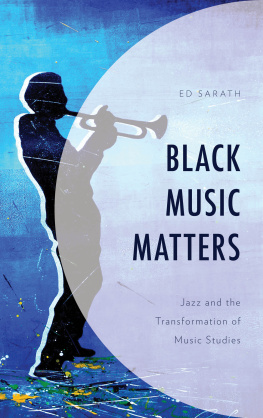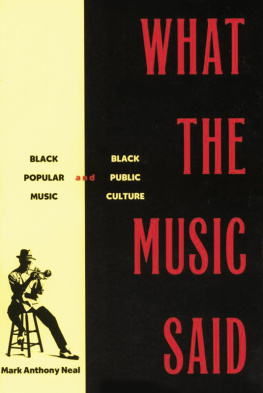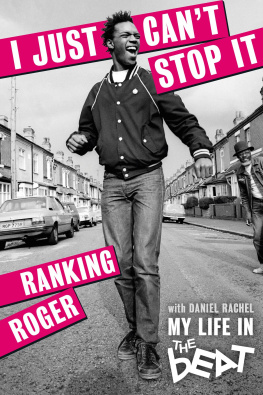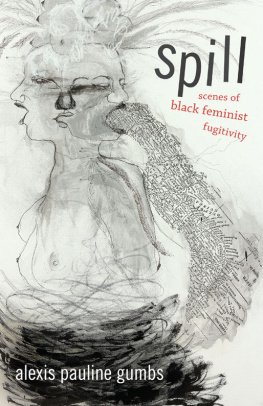Born in Romford, PAULINE BLACK is a singer and actress who gained fame as the lead singer of The Selecter. After the band split in 1982, Black developed an acting career in television and theatre. She won the 1991 Time Out Award for Best Actress for her portrayal of Billie Holiday in the play All or Nothing at All. The Selecter reformed in late 2010 and have recorded a new album Made In Britain due for release in autumn 2011.
BLACK BY DESIGN
A 2-TONE MEMOIR
PAULINE BLACK

A complete catalogue record for this book can
be obtained from the British Library on request
The right of Pauline Black to be identified as the author of this work has been asserted by her in accordance with the Copyright, Designs and Patents Act 1988
Copyright 2011 Pauline Black
All rights reserved. No part of this book may be reproduced, stored in a retrieval system or transmitted in any form or by any means, electronic, mechanical, photocopying, recording or otherwise, without the prior permission of the publisher.
First published in 2011 by Serpents Tail,
an imprint of Profile Books Ltd
3A Exmouth House
Pine Street
London EC1R 0JH
website: www.serpentstail.com
ISBN 978 1 84668 790 7
eISBN 978 1 84765 762 6
Designed and typeset by Crow Books
Printed and bound in Great Britain by Clays, Bungay, Suffolk
10 9 8 7 6 5 4 3 2 1
Grateful acknowledgement: Quote on pp 3878 is from The Velveteen Rabbit by Margery Williams. First published in Great Britain in 1922. Published by Egmont UK Ltd London and used with permission.
For Jane (19502008)
CONTENTS
PART ONE
WHITE TO BLACK
PART TWO
BLACK & WHITE
PART THREE
BACK TO BLACK
ACKNOWLEDGEMENTS
Everything I have to say about my particular lifes journey is written in these pages. It is too late to qualify or worry unduly about what I have said. Suffice to say that I believe it to be the truth.
Much of this book is based on personal diaries, memories or oral family histories. I have tried to give a truthful approximation of what was said to me or relayed by a third party. For the sake of privacy, some of the characters that appear are composites of people I have known and in a few instances names have been changed.
My thanks to author Tony McMahon for initially introducing me to his literary agent, Oli Munson, who generously signed me to Blake Friedmann and suggested that I should consider writing my memoir. Oli singularly nursed this project through, from tentative beginnings to finished draft manuscript with careful readings, kind consideration and thoughtful observation during those periods when occasionally my inkwell ran dry. I also thank him for introducing me to Serpents Tail publisher Pete Ayrton and my dedicated editor, John Williams, who both showed enthusiastic support while shepherding Black By Design to a final manuscript. Thanks also to everybody else at Serpents Tail, particularly Rebecca Gray and Ruth Petrie for firm attention to detail and Anna-Marie Fitzgerald for her unstinting organization.
Thanks to Nella Marin and Linda and Pick Withers, who provided safe London havens during my theatrical years and those friends who supported, encouraged and listened to me during the writing process, especially Esme Duijzer and Paven Kirk, who generously read my scribblings at an early stage and provided useful feedback. Thanks also to members of The Selecter, both past and present, who have provided me with a surrogate, if sometimes unruly, family for over thirty years.
My fond gratitude goes out to the Vickers family, Murphy family, Adenle family and Hamilton family, without whom my tale would never have been told. Four families spread across three continents to tell one story. I love and respect them all.
Lastly, my heartfelt thanks to my wonderful husband, Terry, who supported, listened and encouraged me when I wailed, railed and cursed while bringing my story to the page, and who helpfully provided the solution to many a lapse of memory on my part. I love you dearly.
PART ONE
WHITE TO BLACK
ONE
A WHITE LIE

1958, aged 4
My earliest memory is of vomiting the breakfast contents of my stomach onto a pile of starched white sheets that my mother had just finished ironing. I succeeded in Jackson Pollocking all of them. She was not amused, but then again it was her own fault: she shouldnt have told me that I had been adopted.
It was the late summer of 1958 in Romford, a newly expanding market town in the county of Essex, famous for the stink of its Star brewery, a night down the dogs at the local greyhound racing stadium and as the one-time residence of the infamous Colonel Blood, the only man to have stolen the Crown Jewels, even if only temporarily. This backwater suburb was only fifteen miles north-east of Londons buzzing post-war metropolis, but a light year behind in terms of progressive thinking.
My mother was astute enough to know that, since I was about to start infant school, I should be told the truth about my origins, just in case my new pale-faced schoolmates asked me why I was brown when my parents were white. I had noticed that I was different, but I hadnt realized that it was any kind of a problem. Well, nothing much is a problem at four years old, other than not getting what you really want for birthdays and Christmases.
Why didnt you tell me you felt sick, screamed my mother, as she landed a huge smack on my right leg, grabbed me by the arm and sent me upstairs to my bedroom as punishment. As if I havent got enough work to do, she shouted as I howled my way upstairs.
I sat on my bed, running my hand over the large red handprint on my calf. The mark on my skin felt hot and tender, but the indelible print her words had left on my being was cold and hard.
In her defence, I have to tell you that she was taking Purple Hearts at the time, aka Drinamyl, a potent combination of amphetamine and barbiturate, a form of prescription speed that was doled out by GPs from 1957 onward for menopausal women. It was also the drug de jour of the soon to come swinging 60s, loved by the Mods and Rockers that my mothers generation would so vehemently hate.
Since her marriage to Arthur Vickers at eighteen, she had spent nearly two and a half decades bringing up four sons, Trevor, Tony, Ken and Roger. She was now a woman of a certain age who tired easily, but was still expected to fulfil a monotonous list of housewifely duties without the abundance of todays labour-saving devices. So drug companies made it their business to invent various potent little pills to help such women get the jobs done quicker. How else could women achieve the perfect fifties family home that Hollywood films popularized and spouses expected? Unfortunately these little pick-me-ups made her hopping mad about the least little thing.
I jumped off my bed and stared at my tear-stained face in the dressing tables triptych mirror. I looked different. Then I understood why. I was now a little coloured girl who didnt have a real mummy and daddy. This new piece of information didnt fit me. It was like trying to insert the last piece into a jigsaw, only to find that it belonged to another picture.
My brain buzzed with all the new words that my mother had used. She had said that my real father was from a place called Nigeria. Apparently he had dark-coloured skin. My real mother had been a schoolgirl from the nearby town of Dagenham. No mention was made of the colour of her skin, so I assumed that she wasnt dark coloured. This darkness of colour was said in such a way that I instinctively knew that it wasnt seen as a good thing.
Next page










